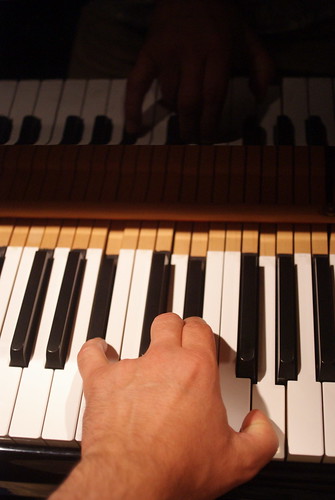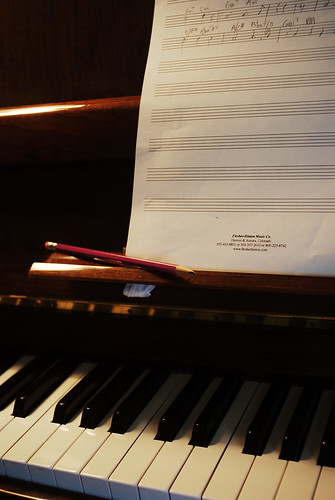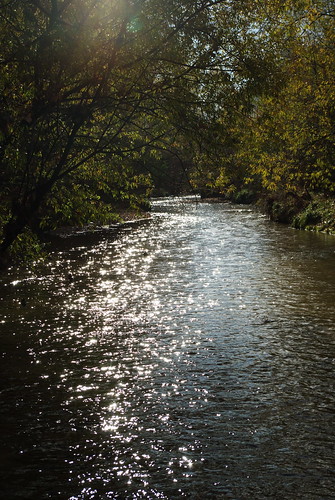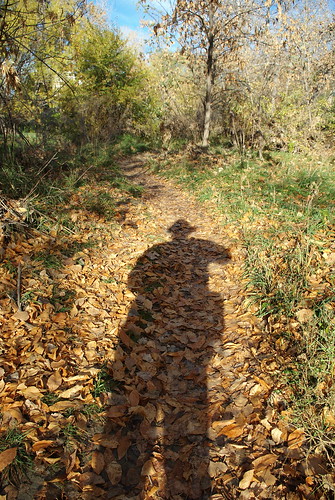
My main occupation is music - specifically, jazz. One of the unique things about jazz is that, compared to other forms of music, one is almost constantly creating. Improvisation is the heart and soul of jazz. In a typical performance, probably 95% of what I play is improvised. This means that each time I play a gig - as I do usually a couple of nights a week on average - I am coming up with several hours' worth of music I have basically never played before. Sure, I am building on foundations that have been laid down already, but most of the specific melodies I play really are created on the spur of the moment. I am accustomed to not waiting for "inspiration" to strike me as if this were an unusual event. I no more require "inspiration" in order to decide what note to play next than I do in order to decide when to take my next breath.

This is in fairly stark contrast to a classical musician practicing a piece over and over so he can perform it pretty much exactly the same way every time. But more importantly, it is also quite different from the image of, say, a writer staring at his typewriter for days on end waiting for a word or two to come out. I come closer to this situation when I am composing, as opposed to improvising, music. Although I know from experience that I can generally compose a tune any time I sit down and put my mind to it. I have not tended to do this very often, but for a while, when I had a regular weekly gig with my quartet, I was writing a tune a week.
For a long time, painting was somewhat similar for me. Virtually all my paintings are landscapes, and virtually all done on location (en plein air). I would make a commitment to myself or a friend or a group (such as a class I might be taking) to show up at a particular time and a particular place and paint whatever happened to present itself that day. I might wander around for a few minutes to find something I liked, and think some about the vantage point that would produce the best composition, how to frame the scene, and how I would approach the painting. But overall, the feeling was almost as automatic as improvising music: just about any time and any place would do, and I would find something to paint as surely as I would find a phrase to play when improvising in jazz.

A couple of weeks ago, however, I hit a point of temporary crisis. I had met a friend to paint at a location we had been to several times before. Very nice scenery, with a river, trees, some interesting old buildings - everything that would normally get me going.

On this occasion, though, I simply could not get inspired. I wandered about with my camera as I always do, taking "test" pictures of various subjects and checking them out on the screen to see if I thought they would make good paintings. Many shots looked perfectly usable, but the overall sense I had was, "been there, done that."

The only two shots I took that excited me were shots that were almost totally unpaintable. Or at least, they could not easily be painted on location. The image at left depended on a quality of light that was not going to last but a minute. The image at right (below) depended on the length of my shadow, which was going to get shorter and shorter the longer I worked - plus the shadow of my easel would have become part of the picture. It would not have been impossible to work around these issues, but now that I had the photographs, I felt no need to go to that much trouble to recreate them as paintings.

I actually considered giving up for the day, as I had been walking in circles for over an hour. But instead, I decided to embrace the idea that inspiration is, or at least can be, important. I still clung to the belief that it should be possible to find something to be inspired by, but accepted that I might have to look harder to find it. In jazz, I always feel I am better off eschewing the obvious and instead going for the less common, but this was one of the first times that the same feeling came over me in painting. I finally got tired - if perhaps only for a moment - of doing essentially the same painting over and over.

In the end, I found something that inspired me - a patch of tall grass that appeared to me like bamboo. In order to really capture what fascinated me about the scene, I sat on the ground on squatted low to give me vantage point where I would be looking up at the top of the grass. This is the type of "unusual" viewpoint that I always admire in photography but seldom think about in painting.
I set up my easel on the ground, too, and painted from this same position. Here is what I ended up with:

The moral? I am not sure. Like I said, I just wanted to share some thoughts. I welcome any comments you may have!

1 comment:
Nice painting.
It seems like you might occasionally go into a song without inspiration, as such, and find that the song provides the seeds of whatever improvisation comes. Can painting be approached similarly? Imagine facing a river scene and just setting up, regarding the drawing and composition as the melody and chord changes, a foundation already there, upon which you put paint in an interesting way that varies. Manet's haystack paintings seem like improvisations on a theme in that kind of way.
Perhaps this is just the way you were describing your normal approach...
Post a Comment